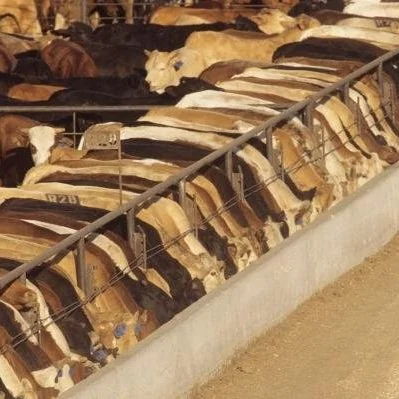Are you noticing an increase in your grocery bill? You’re not alone. In every aisle, prices are high, especially in the meat section.
Read MoreU.S. Rep. Dusty Johnson (R-S.D.) issued his support for the reinstatement of mandatory country of origin labeling (MCOOL) for beef products with his newly introduced Beef Origin Labeling Accountability Act.
The Beef Origin Labeling Accountability Act directs the U.S. Trade Representative and Secretary of Agriculture to determine a process to reinstate MCOOL in compliance with World Trade Organization rules.
Read MoreWhen you bite into a juicy steak, tough isn’t what you’re looking for. There’s a lot of science behind the spectrum from tough to tender.
An enzyme called calpain, specifically calpain-1, is known as the “meat tenderization enzyme.” Calpain-1 cuts other proteins in the meat, making these protein fragments more water-soluble. Having more fragmented protein molecules in meat makes it more tender.
Read MoreThe United States is one step closer to commercializing cultivated meat with the U.S. Department of Agriculture’s approval of two lab-grown meat companies.
Read MoreOver the past few weeks, I have seen news articles and social media posts lying about our industry, attacking our association, and endangering the programs that generations of farmers and ranchers worked hard to establish--and I am fed up.
The skies, though gloomy, did not deter a large crowd of beef cattle and hay producers from attending the LSU AgCenter’s beef and forage field day on April 27.
From market updates to drones for weed control to laboratory-grown beef, participants received a wealth of information about the current state of the beef industry.
Read MoreThe LSU AgCenter will hold its annual Northwest Region Beef and Forage Field Day April 27 at the Hill Farm Research Station in Homer.
Registration begins at 8:30 a.m., with the program beginning at 9 a.m. The Hill Farm Research Station is located at 11959 Highway 9 in Homer.
Read MoreGlobal beef exports have hit an all-time record for volume and value, adding more value to U.S. beef cattle and providing markets for products not currently used in this country.
Those international markets for beef variety meats boosted exports by 15% in 2022 compared to 2021, accounting for $1.24 billion of the total $11.68 billion in U.S. beef exports.
Read MoreEach year beef cattle producers face decisions over whether to cull females from their herds because of decreased productivity, illness or injury, age and many other factors. Along with culling comes the decision to replace these females with heifers — young females that have not yet given birth to a calf — to maintain herd size and productivity. It is not uncommon for producers to have a replacement rate of 15% to 20% annually.
Read MoreLouisiana on Tuesday urged a federal appeals court to revive a law restricting the use of words traditionally used for meat to market plant-based foods after the maker of Tofurky meat substitute products convinced a judge it was unconstitutional.
Read MoreTwo-thirds of consumers reported transparency in animal proteins is extremely or very important and the reasons are personal — health and nutrition top the list. The results come as a response to Merck Animal Health‘s first consumer transparency research study.
Read MoreExports will be a key driver for cattle and beef markets in 2023. How export demand holds up will be influenced by what happens in currency markets. Beef export data continue to show overall growth, but with a high level of economic uncertainty worldwide, headwinds remain strong.
Read MoreFor many beef cattle producers, evaluating breeding soundness of their herd bulls is often an overlooked practice. Selection of bulls based on genetic potential is one of the most progressive ways to improve the beef herd. However, bulls that do not properly settle cows contribute to reproductive inefficiency and lost income — no matter how genetically superior they may be. Performing an annual bull breeding soundness exam (BBSE) on every bull in the herd is the only way producers can predict with relative certainty that their bulls can adequately service the cow herd during the breeding season.
Read MoreThe National Cattlemen's Beef Association (NCBA) announced its priorities for the 2023 Farm Bill based on producer input at the association's Summer Business Meeting in Reno, Nevada.
Read More














